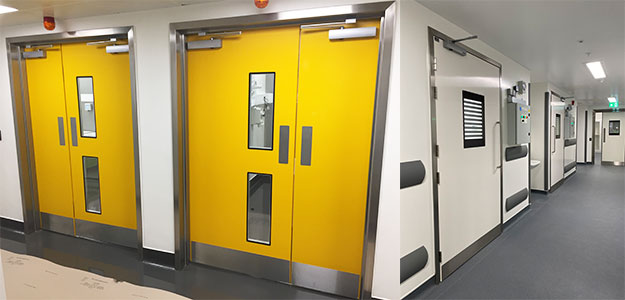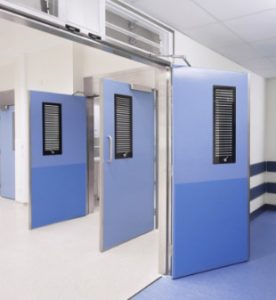Doors for Life Science Facilities

In life science facilities, doors play an important role in ensuring the safety and security of the people working within the facility and the research itself.
Choosing the correct door system is a critical part of the design within these facilities, as compliance with standards, ease of traffic movement, hygiene, fire regulations and balance of air movement will dictate the types of door being used or specified. In addition, doors must be seamless, waterproof, resistant to cleaning regimes and free of voids and organic material such as timber where bacteria could multiply.
The following are some of the key reasons to use specialist door types like hygienic GRP/FRP in research and life science facilities;
- Doors should have a smooth, seamless hygienic construction, and must be designed to be easy to clean and keep clean.
- The door and frame should be completely void free – there should be nowhere that moisture and bacteria can gather undetected.
- Doors should be resistant to the commonly used cleaning and fumigation agents used in research facilities.
- Doors should remain dimensionally-stable. Unlike timber-cored products, a GRP/FRP door leaf will not bow, warp, crack or deflect whatever the temperature or humidity.
- Ledges should be minimised (windows should be frameless and completely flush to both sides of the door).
- Doors should be lightweight, yet very strong. They should be easy to operate by facility users. They should have solid, yet durable finishes to prevent the formation of chips where micro-organisms can find egress.
- Fire doors should be third party fire certificated to the appropriate UL, BS, EN, China, Singapore, Australia, and NZ standards.
- Doors have the ability to be equipped with a range of access control systems and interlocking to prevent unauthorized entry.
- Doors should have a self-closing system and, where required, air locking mechanisms to provide a tight seal and prevent the spread of hazardous fumes or materials.
- Doors should be available with lead lining for radiation control.
By choosing the right doors for their life science facilities, facility and building owners can ensure the safety, security, and integrity of their research. Dortek have supplied our specialist doors to 14 of the top named research universities in the world.
- University of Oxford, UK
- Stanford University, US
- University of Cambridge, UK
- University College London, UK
- University of Pennsylvania, US
- King’s College London, UK
- Nanyang Technological University, Singapore
- National University of Singapore
- Hong Kong University of Science and technology
- University of Technology, Sydney
- Weizmann Institute of Science, Israel
- Macquarie University, Australia
- RMIT, Australia
- London School of Hygiene & Tropical Medicine, UK.





